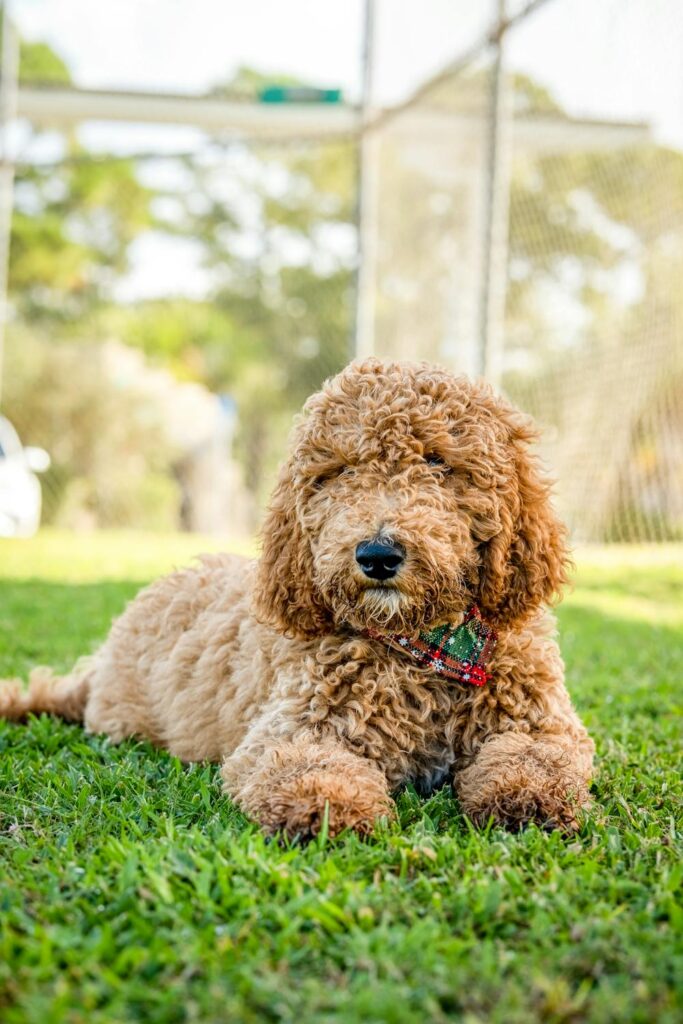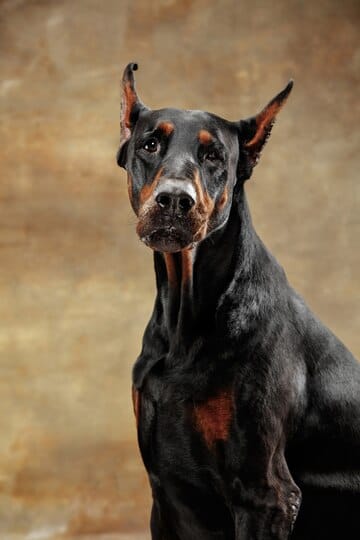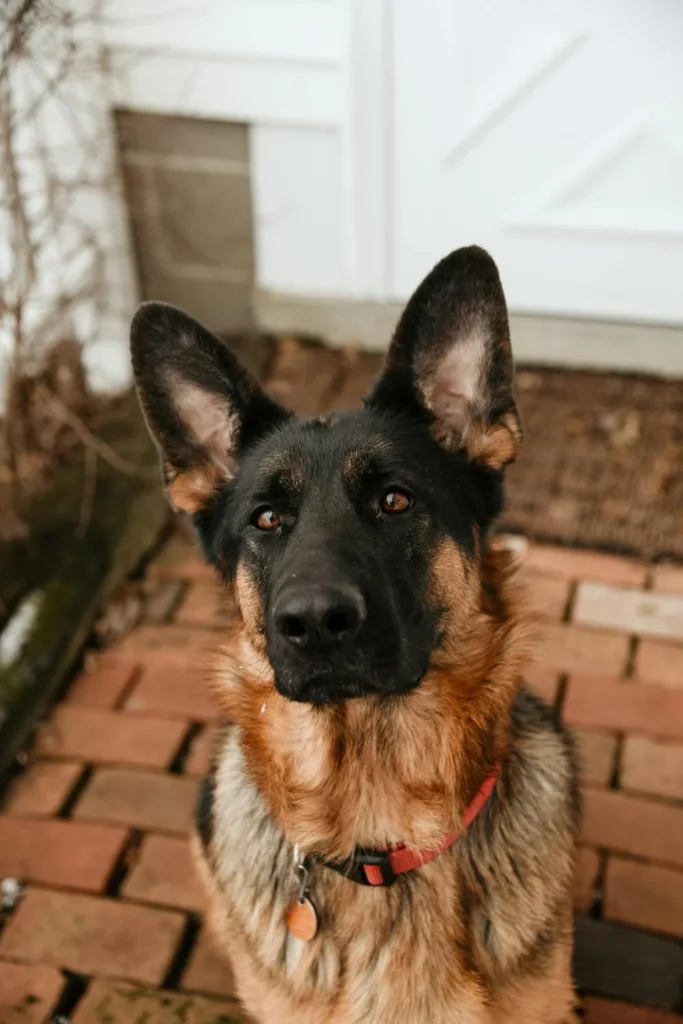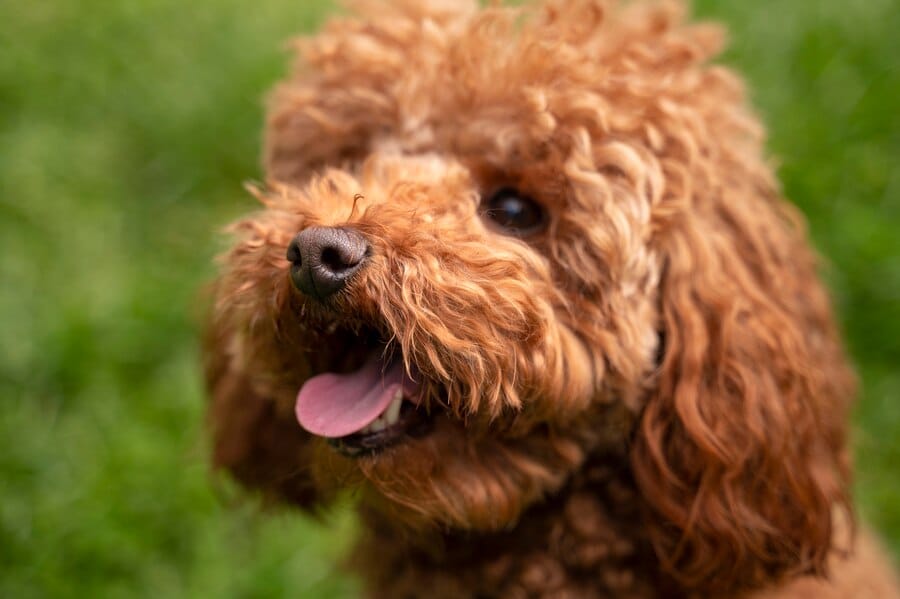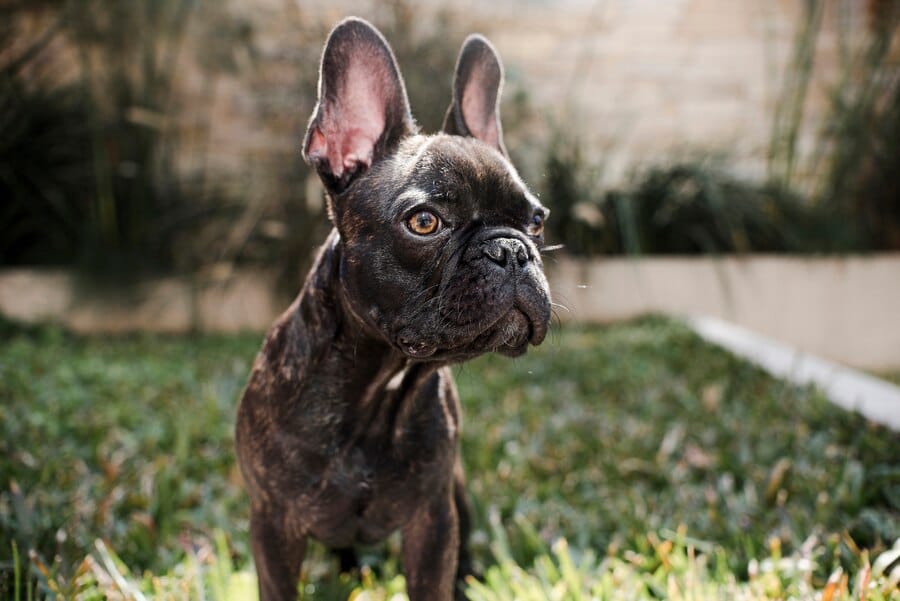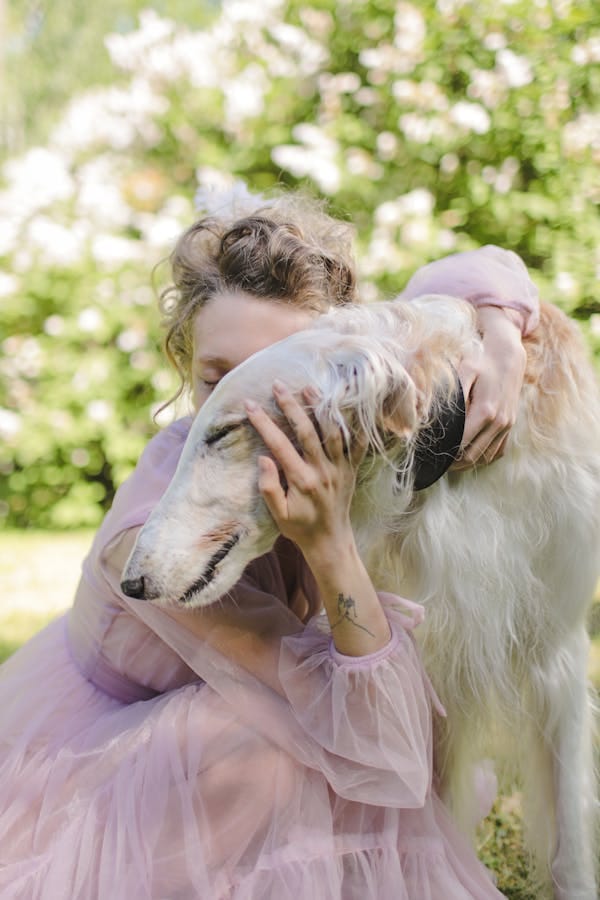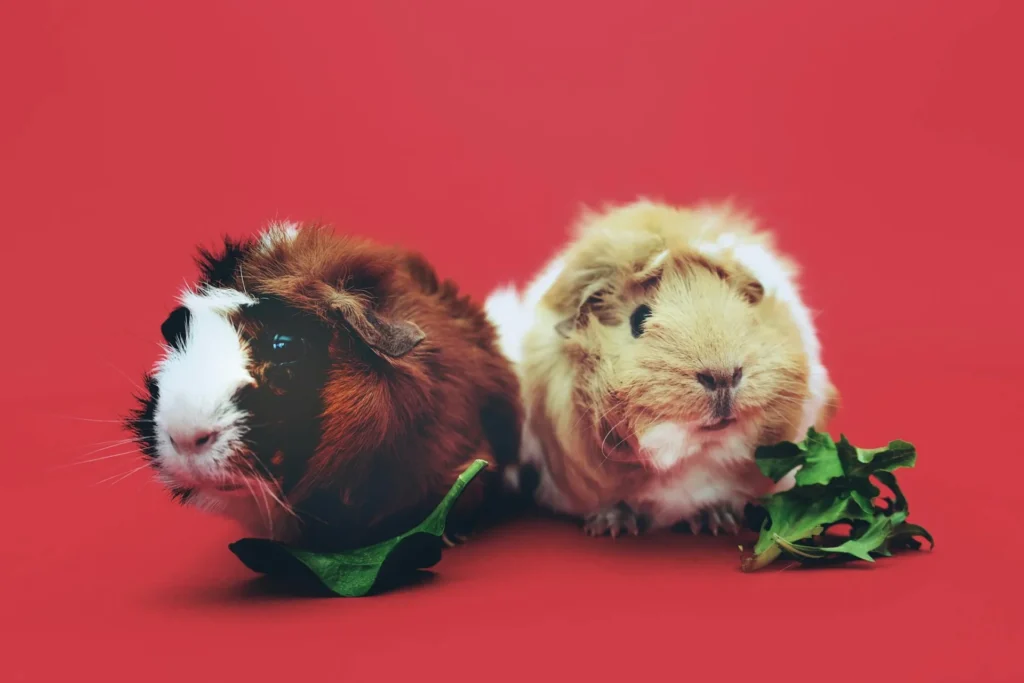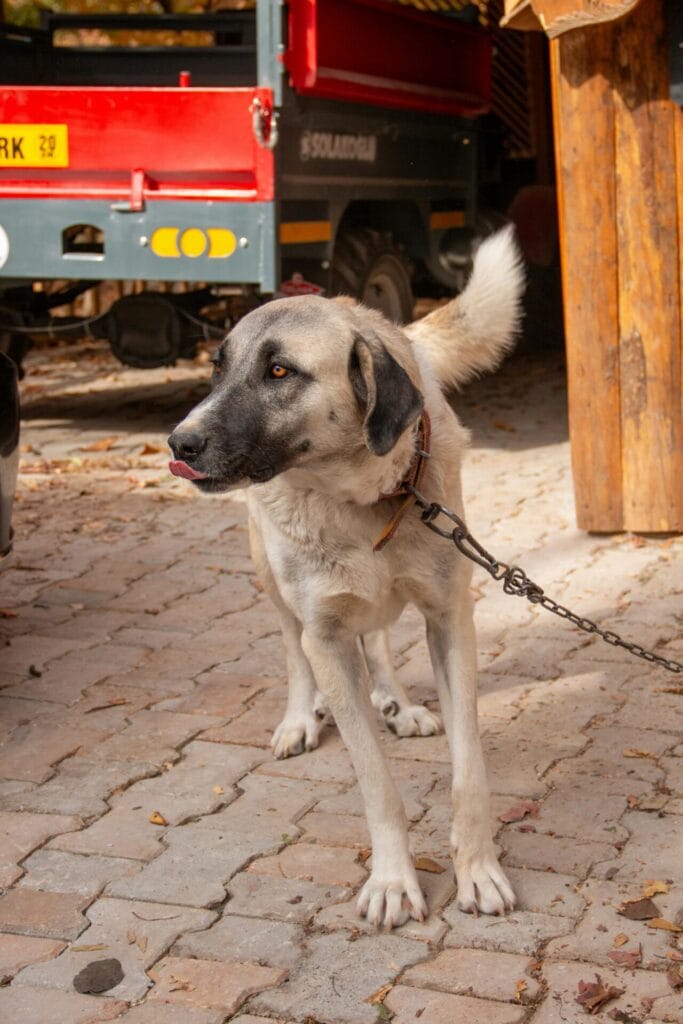- Understanding Allergies: More Than Just a Sneeze 🤧
- The Poodle’s Claim to Fame: Hypoallergenic Hype 🌟
- Poodle Coats: Separating Fact from Fiction 🕵️♀️
- The Poodle’s Potential for Reduced Allergens: A Closer Look 🔬
- Poodle Varieties: A Size for Every Home 📏
- Factors Influencing Allergen Levels in Poodles 🧬
- Introducing a Poodle to an Allergy-Prone Household: A Step-by-Step Guide 🏠
- Tips for Managing Allergens in a Poodle-Friendly Home 🧼
- Poodles and Allergies in Children: A Special Consideration 👶
- The Role of Professional Groomers: More Than Just a Pretty Cut ✂️
- Poodle Mixes: The Best of Both Worlds? 🐕🌈
- Comparing Poodles to Other “Hypoallergenic” Breeds 📊
- Best and Worst Dog Breeds for Allergies: A Comprehensive Guide 🏆😬
- FREQUENTLY ASKED QUESTIONS
- Are poodles 100% hypoallergenic?
- Do all poodle varieties have the same hypoallergenic properties?
- How often should I groom my poodle to minimize allergens?
- Can poodle mixes (like Labradoodles or Goldendoodles) be hypoallergenic?
- Will spending time with a poodle before adoption help determine if I’m allergic?
- Do poodles of different colors have different levels of allergens?
- Are there any specific diets that can make poodles more hypoallergenic?
- How do poodles compare to other hypoallergenic breeds?
- Can regular bathing reduce allergens in poodles?
- Is it possible to build up tolerance to poodle allergens over time?
- Can I develop allergies to a poodle over time?
- What steps can I take to minimize allergen exposure in my home?
- The Bottom Line: Are Poodles Truly Hypoallergenic? 🤔
Understanding Allergies: More Than Just a Sneeze 🤧
Allergies can be a real pain, especially for dog lovers who find themselves sneezing and wheezing around their furry friends. But before we dive into the world of poodles and their hypoallergenic reputation, let’s clear the air about what actually causes dog allergies.
Many people think dog allergies are caused by fur, but that’s not the whole story. The real culprits are proteins found in a dog’s:
- Saliva 💦
- Urine 💧
- Dander (dead skin cells) 🧼
These proteins can trigger allergic reactions in sensitive individuals, causing a range of uncomfortable symptoms:
- Sneezing 🤧
- Runny nose 👃
- Itchy eyes 👀
- Skin rashes 🚨
- Wheezing 😮💨
- Coughing 😷
- Shortness of breath 😰
For some people, these allergic reactions can be mild and manageable. For others, they can be severe enough to make living with a dog seem impossible. But don’t give up hope just yet! That’s where poodles come in. 🐾
The Poodle‘s Claim to Fame: Hypoallergenic Hype 🌟
Poodles have long been touted as a go-to breed for allergy sufferers. But what makes these curly-coated canines so special? Let’s unpack the hype and get to the heart of the matter.
Why Are Poodles Considered Hypoallergenic? 🧬
- Low-shedding coat: Poodles have hair instead of fur, which grows continuously and sheds minimally. This means fewer allergens are released into the environment.
- Single-layer coat: Unlike many breeds with a double coat, poodles have a single layer of hair. This reduces the amount of dander produced and trapped in their coat.
- Minimal dander production: Poodles tend to produce less dander than many other breeds, which is a significant factor in their hypoallergenic status.
- Frequent grooming: The poodle’s coat requires regular grooming, which helps remove loose hair and dander before it can spread around your home.
- Saliva composition: Some studies suggest that poodles might produce less of the allergenic proteins in their saliva compared to other breeds.
It’s important to note that while these factors contribute to poodles being considered hypoallergenic, no dog is truly 100% allergy-free. The term “hypoallergenic” simply means that poodles are less likely to trigger allergies in sensitive individuals.
Poodle Coats: Separating Fact from Fiction 🕵️♀️
Now that we understand why poodles are often labeled as hypoallergenic, let’s bust some common myths about poodle coats and allergies.
Myth #1: Lighter-colored poodles are less allergenic 🐑
❌ False! The color of a poodle’s coat has absolutely no impact on its allergen production. Whether your poodle is black, white, apricot, or any other color, the allergen levels will be the same. The proteins that cause allergies are present regardless of coat color.
Myth #2: Poodles with tighter curls are less allergenic 🌀
❌ Not quite! While tighter curls might trap more dander and loose hair (potentially keeping it from spreading around your home), they don’t actually reduce allergen production. In fact, very tight curls can be more challenging to groom thoroughly, potentially leading to a buildup of allergens if not properly maintained.
Myth #3: Poodle hair is completely hypoallergenic 🦄
❌ Not exactly. As we mentioned earlier, no dog is 100% hypoallergenic. Poodle hair can still contain and spread allergens, albeit at a lower level than many other breeds. It’s the combination of their coat type, low shedding, and reduced dander production that makes them a better choice for allergy sufferers.
The Poodle’s Potential for Reduced Allergens: A Closer Look 🔬
Now that we’ve debunked some myths, let’s dive deeper into why poodles have earned their reputation as allergy-friendly dogs. It’s all about their unique coat characteristics and how they interact with allergens.
The Poodle Coat: A Marvel of Canine Engineering 🧵
- Hair vs. Fur: Poodles have hair that grows continuously, similar to human hair. This is different from the fur found on many other dog breeds, which grows to a certain length and then sheds.
- Minimal Shedding: Because poodle hair grows continuously, it sheds much less than fur. When poodle hair does fall out, it often gets trapped in the surrounding curls rather than spreading around your home.
- Curl Power: The tight curls in a poodle’s coat can actually help trap dander and other allergens close to the skin, reducing their spread into the environment.
- Sebum Production: Poodles tend to produce less sebum (skin oil) than some other breeds. This can result in less dander production and potentially fewer allergens.
The Science Behind Poodle Allergies 🧪
While poodles are often recommended for allergy sufferers, it’s important to understand that allergies are complex and can vary greatly from person to person. Here’s what the science says:
- A 2012 study published in the American Journal of Rhinology & Allergy found that homes with “hypoallergenic” dog breeds, including poodles, did not have significantly lower levels of Can f 1 (a major dog allergen) than homes with other dog breeds.
- However, a 2013 study in the Journal of Allergy and Clinical Immunology found that poodles produced less of the allergenic protein Can f 1 in their saliva compared to Labrador Retrievers.
These conflicting results highlight the complexity of dog allergies and the need for more research. They also underscore the importance of spending time with a specific poodle before bringing one home if you have allergies.
Poodle Varieties: A Size for Every Home 📏
One of the great things about poodles is that they come in different sizes to suit various lifestyles and living situations. Let’s take a closer look at the three official poodle varieties and how they compare in terms of allergen potential.
Are Standard Poodles Hypoallergenic? 🐕
- Height: Over 15 inches tall at the shoulder
- Weight: 40-70 pounds
- Allergen Potential: Lower than many breeds, but higher than smaller poodle varieties
Standard Poodles are the largest variety and were originally bred as water retrievers. Their larger size means they have more skin surface area and potentially produce more dander. However, they still shed very little and are considered a good choice for allergy sufferers.
Are Miniature Poodles Hypoallergenic? 🐩
- Height: 10-15 inches tall at the shoulder
- Weight: 10-20 pounds
- Allergen Potential: Very low
Miniature Poodles offer a great compromise between size and allergen reduction. They’re small enough to produce fewer allergens than their larger cousins but still big enough to be sturdy companions.
Are Toy Poodles Hypoallergenic? 🧸
- Height: Under 10 inches tall at the shoulder
- Weight: 4-6 pounds
- Allergen Potential: Lowest of the poodle varieties
Toy Poodles, being the smallest variety, theoretically produce the least amount of allergens simply due to their size. They’re an excellent choice for allergy sufferers who live in small spaces or prefer a lap dog.
Here’s a comparison table to help visualize the differences:
| Variety | Size | Shedding Level | Allergen Potential | Grooming Needs |
|---|---|---|---|---|
| Standard | Large | Low | Lower | High |
| Miniature | Medium | Very Low | Lowest | High |
| Toy | Small | Very Low | Lowest | High |
Remember, while smaller poodles might produce fewer allergens overall, individual dogs can vary. It’s always best to spend time with a specific poodle before making a commitment.
Factors Influencing Allergen Levels in Poodles 🧬
While poodles are generally considered good for allergy sufferers, several factors can affect how “hypoallergenic” an individual poodle might be:
- Genetics 🧬: Some poodles may naturally produce fewer allergens due to their genetic makeup. This can vary even within the same litter.
- Diet 🥩: A healthy, balanced diet can improve skin and coat health, potentially reducing dander production. Some studies suggest that diets rich in omega-3 fatty acids may help reduce allergen production.
- Grooming ✂️: Regular grooming removes loose hair and dander, reducing the amount of allergens in your home. The frequency and thoroughness of grooming can significantly impact allergen levels.
- Environment 🏠: Indoor poodles may accumulate more allergens on their coat from household dust and other indoor allergens. Outdoor poodles might bring in pollen and other environmental allergens.
- Age 🎂: Younger poodles might produce fewer allergens than older ones, as skin cell turnover tends to slow with age, potentially increasing dander production.
- Health 🏥: Skin conditions or other health issues can affect dander production and overall allergen levels.
- Stress 😰: Like humans, dogs can produce more dander when stressed. A calm, happy poodle might be less allergenic than a stressed one.
- Hormones 🤰: Hormonal changes, such as those during pregnancy or heat cycles, can affect allergen production.
Understanding these factors can help you manage your poodle’s allergen levels more effectively.
Introducing a Poodle to an Allergy-Prone Household: A Step-by-Step Guide 🏠
Thinking of bringing a poodle into your allergy-prone home? Here’s a detailed guide to help make the transition as smooth as possible:
- Consult an allergist 👨⚕️: Before bringing any dog into your home, get tested for specific dog allergies. This can help you understand your sensitivities and develop a management plan.
- Meet the poodle 🤝: Spend significant time with the poodle you’re considering. This could mean multiple visits over several weeks. Pay attention to any allergy symptoms that develop.
- Start slow 🐢: If you decide to bring the poodle home, introduce them gradually. Start with short visits and gradually increase the duration.
- Create an allergy-free zone 🛏️: Designate certain areas of your home, especially bedrooms, as poodle-free zones initially. This gives you a safe space if allergies flare up.
- Establish a grooming routine 🛁: Regular baths and brushing can help manage allergens. Start this routine from day one.
- Invest in air purifiers 💨: HEPA air purifiers can help remove airborne allergens, making your home more comfortable.
- Clean frequently 🧹: Vacuum carpets and furniture regularly, and dust with a damp cloth to trap allergens.
- Monitor symptoms 📊: Keep a diary of any allergy symptoms you experience. This can help you and your allergist fine-tune your management strategy.
- Be patient ⏳: It can take time for your body to adjust to a new pet. Give yourself several weeks to see how you respond.
- Have a backup plan 🚪: Despite best efforts, sometimes it doesn’t work out. Have a plan in place for rehoming the poodle if your allergies prove too severe.
Remember, introducing a poodle to an allergy-prone household is a process that requires patience and careful monitoring. But for many people, the joy of having a poodle companion is well worth the effort!
Tips for Managing Allergens in a Poodle-Friendly Home 🧼
Once you’ve successfully introduced a poodle into your home, maintaining a low-allergen environment is key. Here are some detailed tips to help you manage allergens effectively:
- HEPA filters 🌬️: Use high-quality air purifiers with HEPA filters in main living areas and bedrooms. These can trap airborne allergens, including pet dander.
- Frequent cleaning 🧽: Vacuum carpets and upholstery at least twice a week using a vacuum with a HEPA filter. Hardwood or tile floors should be damp mopped regularly.
- Wash hands 🧼: After petting your poodle, wash your hands thoroughly to avoid spreading allergens to your face or other surfaces.
- Groom outdoors 🌳: Brush your poodle outside when possible to prevent allergen buildup indoors. If outdoor grooming isn’t feasible, do it in a well-ventilated area that’s easy to clean.
- Regular baths 🛁: Bathe your poodle every 2-4 weeks, depending on their lifestyle and your sensitivity. Use a gentle, hypoallergenic dog shampoo.
- Allergy-proof bedding 🛏️: Use allergen-proof covers on mattresses and pillows, especially if your poodle sleeps in your bedroom.
- Limit fabrics 🛋️: Opt for leather or vinyl furniture when possible, as fabric upholstery can trap allergens. If you have fabric furniture, use washable slipcovers.
- Wash pet items 🧺: Regularly wash your poodle’s bed, toys, and any blankets they use in hot water to reduce allergens.
- Control humidity 💧: Keep indoor humidity below 50% to discourage dust mite growth, which can exacerbate allergies.
- Consider medications 💊: Consult your allergist about antihistamines or other treatments that can help manage your symptoms.
- Healthy diet 🥗: Feed your poodle a high-quality diet rich in omega-3 fatty acids, which may help reduce allergen production.
- Regular vet check-ups 🏥: Keep your poodle healthy with regular vet visits, as skin conditions can increase dander production.
By implementing these strategies, many allergy sufferers find they can live comfortably with their poodle companions.
Poodles and Allergies in Children: A Special Consideration 👶
When it comes to children with allergies, introducing a poodle requires extra care and consideration. Here’s why:
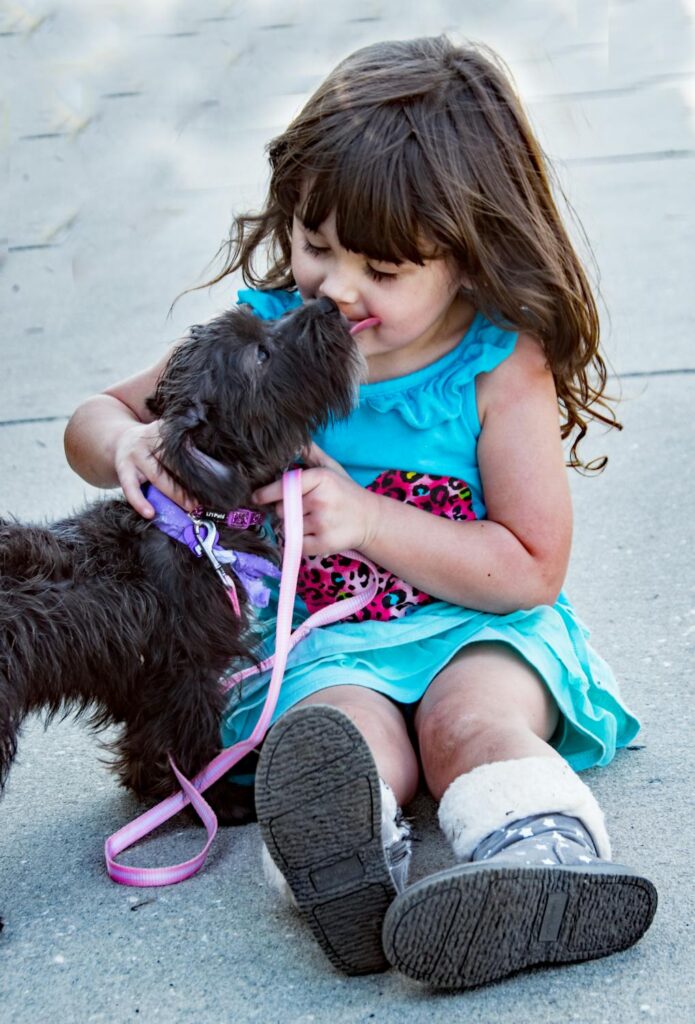
- Developing immune systems 🌱: Children’s immune systems are still developing, which can make them more susceptible to allergies.
- Potential for prevention 🛡️: Some studies suggest that early exposure to pets might actually help prevent allergies in children. However, this isn’t true for all children and should be approached cautiously.
- Intensity of interaction 🤗: Children often have more intense physical interactions with dogs, which can increase allergen exposure.
- Difficulty communicating symptoms 🗣️: Younger children may have trouble articulating their allergy symptoms, making it harder to monitor their reactions.
If you’re considering bringing a poodle into a home with allergy-prone children, here are some steps to take:
- Consult a pediatric allergist 👩⚕️: Get professional advice and potentially have your child tested for specific dog allergies.
- Supervised interactions 👀: Always supervise initial interactions between your child and the poodle, watching closely for any signs of allergic reactions.
- Gradual introduction 🐾: Start with short, controlled exposures and gradually increase the duration if no symptoms appear.
- Teach proper hygiene 🧼: Teach your child to wash their hands after petting the poodle and to avoid touching their face while playing with the dog.
- Create safe spaces 🏠: Maintain poodle-free zones in your home, especially in your child’s bedroom.
- Monitor and record 📝: Keep a detailed log of any symptoms your child experiences, which can help your allergist make informed decisions.
- Be prepared to rehome 💔: As difficult as it may be, be prepared to find a new home for the poodle if your child’s allergies prove too severe.
Remember, every child is different, and what works for one family may not work for another. Always prioritize your child’s health and well-being when making decisions about pet ownership.
The Role of Professional Groomers: More Than Just a Pretty Cut ✂️
When it comes to managing allergens, professional grooming can play a crucial role. Here’s why professional grooming is so important
for poodle owners, especially those with allergies:
- Thorough cleaning 🧼: Professional groomers have the tools and expertise to clean your poodle’s coat thoroughly, removing allergens trapped deep in the curls that home grooming might miss.
- Proper trimming ✂️: A well-executed haircut can reduce the amount of hair that can trap allergens. Groomers know how to maintain the poodle’s coat at an optimal length for allergy management.
- Skin check 🔍: During grooming, professionals can identify potential skin issues that could increase dander production. Early detection can prevent these problems from exacerbating allergies.
- Specialized tools 🛠️: Professional-grade equipment, like high-velocity dryers, can remove more loose hair and dander than typical home grooming tools.
- Ear cleaning 👂: Groomers clean the ears thoroughly, reducing the risk of infections that could lead to increased allergen production.
- Nail trimming 💅: Regular nail trims can prevent your poodle from scratching excessively, which can increase the spread of dander and allergens.
- Gland expression 💧: Some poodles need their anal glands expressed regularly. This task is best left to professionals and can reduce allergens from this source.
- Product knowledge 🧴: Professional groomers know which shampoos and conditioners work best for different coat types and skin conditions, potentially helping to reduce allergen production.
Consider monthly grooming appointments to keep your poodle’s coat in top shape and allergens at bay. The investment in professional grooming can significantly improve quality of life for allergy sufferers living with poodles.
Poodle Mixes: The Best of Both Worlds? 🐕🌈
Poodle mixes, often affectionately called “doodles,” have gained immense popularity in recent years. Many people are drawn to these mixed breeds in hopes of getting the best traits from both parent breeds, including the poodle’s hypoallergenic qualities. But are poodle mixes truly hypoallergenic? Let’s dive in:
Popular Poodle Mixes:
- Labradoodle (Labrador Retriever + Poodle) 🐕🦺
- Goldendoodle (Golden Retriever + Poodle) 🦮
- Cockapoo (Cocker Spaniel + Poodle) 🐶
- Schnoodle (Schnauzer + Poodle) 🐩
- Yorkipoo (Yorkshire Terrier + Poodle) 🐕
Are Poodle Mixes Hypoallergenic?
The short answer is: it depends. Here’s why:
- Genetic lottery 🎲: Poodle mixes inherit genes from both parent breeds. This means they might inherit the poodle’s low-shedding coat… or they might not.
- Coat variation 🌈: Even within the same litter, poodle mix puppies can have very different coat types. Some may have the poodle’s curly, low-shedding coat, while others might have a coat more like the other parent breed.
- Generational differences 👪: First-generation mixes (F1) are less predictable in terms of coat type and allergen production. Later generations (F1b, F2, etc.) bred back to poodles may be more likely to have poodle-like coats.
- Individual variation 🧬: Just like purebred poodles, individual poodle mixes can vary in their allergen production.
- Grooming needs ✂️: Many poodle mixes require just as much grooming as purebred poodles to maintain their coats and minimize allergen spread.
Considerations When Choosing a Poodle Mix:
- Meet the parents 👨👩👧👦: If possible, meet both parent dogs to get an idea of coat types and potential allergen levels.
- Spend time with the specific dog 🕰️: Regardless of breed or mix, always spend time with the individual dog you’re considering to see how your allergies react.
- Consider later generations 🔄: If allergies are a major concern, consider F1b or later generation mixes that have been bred back to poodles, as they’re more likely to have poodle-like coats.
- Be prepared for surprises 🎁: Remember that a puppy’s coat can change as they mature, so a seemingly hypoallergenic puppy might develop a different coat type as an adult.
- Commit to grooming 🛁: Regular grooming is essential for managing allergens in poodle mixes, just as it is for purebred poodles.
While poodle mixes can be a great option for some allergy sufferers, they’re not guaranteed to be hypoallergenic. It’s crucial to approach poodle mixes with realistic expectations and do thorough research before bringing one into your home.
Comparing Poodles to Other “Hypoallergenic” Breeds 📊
While poodles are often the poster child for hypoallergenic dogs, they’re not the only breed recommended for allergy sufferers. Let’s compare poodles to other breeds often touted as allergy-friendly:
| Breed | Shedding Level | Grooming Needs | Allergen Potential | Size | Energy Level |
|---|---|---|---|---|---|
| Poodle | Very Low | High | Low | Varies | High |
| Bichon Frise | Very Low | High | Low | Small | Moderate |
| Portuguese Water Dog | Low | High | Low | Medium | High |
| Schnauzer | Low | Moderate | Low-Moderate | Varies | Moderate-High |
| Maltese | Very Low | High | Low | Small | Moderate |
| Soft-Coated Wheaten Terrier | Low | High | Low | Medium | High |
| Shih Tzu | Low | High | Low | Small | Low-Moderate |
| Yorkshire Terrier | Low | High | Low | Small | Moderate |
How Poodles Compare:
- Versatility in size 📏: Poodles come in three sizes, making them adaptable to various living situations.
- Intelligence 🧠: Poodles are known for their high intelligence, which can make them easier to train but also means they need mental stimulation.
- Exercise needs 🏃♀️: Poodles, especially Standard Poodles, have higher exercise needs than some other hypoallergenic breeds.
- Grooming requirements ✂️: While all low-shedding breeds need regular grooming, poodles’ coats can be styled in various ways, offering more flexibility.
- Temperament 😊: Poodles are generally friendly and good with families, but individual temperaments can vary.
- Longevity 🕰️: Poodles, especially smaller varieties, often have long lifespans compared to some other breeds.
Remember, while these breeds are considered more suitable for allergy sufferers, individual dogs within any breed can vary in their allergen production. Always spend time with a specific dog before making a commitment.
Best and Worst Dog Breeds for Allergies: A Comprehensive Guide 🏆😬
While no dog is truly 100% hypoallergenic, some breeds are generally better for allergy sufferers than others. Here’s a breakdown of some of the best and worst dog breeds for people with allergies:
Best Breeds for Allergy Sufferers: 🌟
- Poodle 🐩: All varieties (Standard, Miniature, Toy)
- Low-shedding, minimal dander, intelligent and versatile
- Bichon Frise 🐑:
- Fluffy white dogs with hair-like coats that shed minimally
- Portuguese Water Dog 🌊:
- Similar to poodles in coat type, energetic and loving
- Soft-Coated Wheaten Terrier 🌾:
- Soft, silky coat that sheds minimally, friendly temperament
- Maltese 🐕:
- Tiny dogs with long, silky coats that shed very little
- Schnauzer 🧔:
- All sizes (Giant, Standard, Miniature), low-shedding wire coats
- Yorkshire Terrier 🐕🦺:
- Small dogs with hair-like coats, minimal shedding
- Shih Tzu 🦁:
- Small, affectionate dogs with hair-like coats
- Irish Water Spaniel 🍀:
- Larger dogs with curly, low-shedding coats
- Lagotto Romagnolo 🍄:
- Medium-sized dogs with wooly, low-shedding coats
Worst Breeds for Allergy Sufferers: 😬
- Saint Bernard 🐶:
- Large dogs with thick, shedding double coats
- Bulldog 🦴:
- Short-haired but heavy shedders with drooling tendencies
- German Shepherd 🐕🦺:
- Heavy shedders with dense undercoats
- Siberian Husky ❄️:
- Beautiful but heavy shedders, especially during seasonal changes
- Labrador Retriever 🦮:
- Popular family dogs but heavy shedders
- Pug 🐾:
- Short-haired but heavy shedders with skin folds that can trap allergens
- Akita 🦊:
- Large dogs with thick, shedding double coats
- Doberman Pinscher 🐕:
- Short-haired but can shed significantly
- Boston Terrier 🐶:
- Short-haired but can shed and drool, potentially increasing allergens
- Great Pyrenees ⛰️:
- Large, fluffy dogs with heavy seasonal shedding
Remember, these lists are general guidelines. Individual dogs within any breed can vary in their allergen production. Factors like grooming, diet, and overall health can also impact how “hypoallergenic” a dog is.
FREQUENTLY ASKED QUESTIONS
Are poodles 100% hypoallergenic?
No dog is 100% hypoallergenic. However, poodles are considered one of the best breeds for allergy sufferers due to their low-shedding, low-dander coats.
Do all poodle varieties have the same hypoallergenic properties?
All poodle varieties (Standard, Miniature, and Toy) have similar hypoallergenic properties. However, smaller poodles may produce fewer allergens simply due to their size.
How often should I groom my poodle to minimize allergens?
Professional grooming every 4-6 weeks is recommended, with regular brushing at home 2-3 times a week.
Can poodle mixes (like Labradoodles or Goldendoodles) be hypoallergenic?
Poodle mixes may inherit hypoallergenic qualities, but it’s not guaranteed. It depends on which parent’s genes are more dominant.
Will spending time with a poodle before adoption help determine if I’m allergic?
Yes, spending time with a specific poodle is the best way to determine if you’ll react to their allergens. Everyone’s allergies are different.
Do poodles of different colors have different levels of allergens?
No, the color of a poodle’s coat does not affect its allergen production.
Are there any specific diets that can make poodles more hypoallergenic?
While no diet can make a dog completely hypoallergenic, a balanced diet rich in omega-3 fatty acids may help improve coat and skin health, potentially reducing dander.
How do poodles compare to other hypoallergenic breeds?
Poodles are often considered one of the best hypoallergenic breeds, along with Bichon Frises, Portuguese Water Dogs, and Soft-Coated Wheaten Terriers.
Can regular bathing reduce allergens in poodles?
Yes, regular bathing (every 2-4 weeks) with a gentle, hypoallergenic shampoo can help reduce allergens.
Is it possible to build up tolerance to poodle allergens over time?
Some people may develop a tolerance over time, but this varies greatly between individuals. Always consult with an allergist for personalized advice.
Can I develop allergies to a poodle over time?
It is possible to develop allergies to a poodle or any other pet over time, even if you initially showed no reaction. Regular monitoring and allergy testing are recommended.
What steps can I take to minimize allergen exposure in my home?
Implementing a consistent grooming and cleaning routine, using air purifiers, vacuuming regularly, restricting the poodle’s access to certain areas, and washing bedding frequently can help minimize allergen buildup and exposure.
The Bottom Line: Are Poodles Truly Hypoallergenic? 🤔
After diving deep into the world of poodles and allergies, let’s sum up what we’ve learned:
- No dog is 100% hypoallergenic ❗: Even poodles produce some allergens, but they’re generally considered one of the best breeds for allergy sufferers.
- Individual variation exists 🧬: Even within the poodle breed, some dogs may produce more allergens than others.
- Poodles have unique coat characteristics 🌀: Their hair-like, low-shedding coats contribute to their reputation as allergy-friendly dogs.
- Regular grooming is key ✂️: Maintaining a poodle’s coat through regular grooming can significantly reduce the spread of allergens.
- Size matters 📏: Smaller poodles may produce fewer allergens simply due to their size, but this isn’t a hard and fast rule.
- Poodle mixes aren’t guaranteed 🎲: While some poodle mixes inherit the poodle’s hypoallergenic qualities, it’s not guaranteed.
- Personal experience is crucial 👥: Spending time with a specific poodle is the best way to determine if you’ll react to their allergens.
If you’re considering a poodle but have allergies, take these steps:
- Consult with an allergist 👨⚕️
- Spend significant time with poodles before committing 🕰️
- Consider a trial period with your chosen poodle 🏠
- Implement allergy management strategies in your home 🧼
- Be prepared for ongoing grooming needs ✂️
With the right approach, many allergy sufferers find they can live happily and healthily with a poodle companion. These intelligent, affectionate, and versatile dogs can bring joy to many homes, even those with allergy concerns.
Remember, every person’s allergies are different, and what works for one may not work for another. It’s all about finding the right balance between managing your allergies and enjoying the companionship of a furry friend.
In the end, while poodles may not be magical allergy-free dogs, they come pretty close for many people. With proper care, grooming, and management, a poodle could be the perfect addition to your allergy-prone household. After all, love is nothing to sneeze at! 🐾❤️

